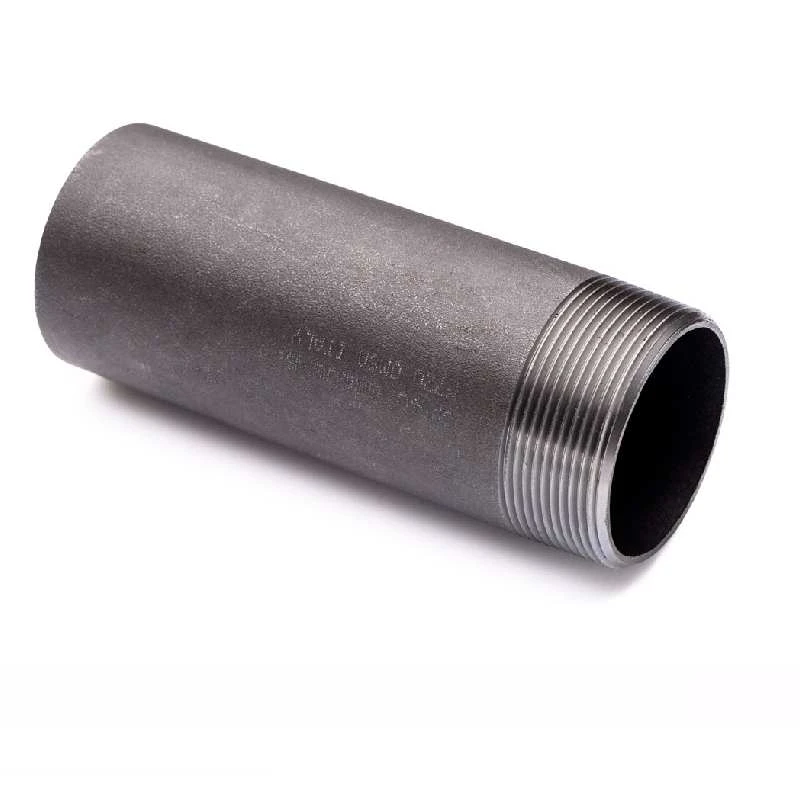-
Cangzhou Yulong Steel Co., Ltd.
-
Phone:
+86 13303177267 -
Email:
admin@ylsteelfittings.com
- English
- Arabic
- Italian
- Spanish
- Portuguese
- German
- kazakh
- Persian
- Greek
- French
- Russian
- Polish
- Thai
- Indonesian
- Vietnamese
- Zulu
- Korean
- Uzbek
- Hindi
- Serbian
- Malay
- Ukrainian
- Gujarati
- Haitian Creole
- hausa
- hawaiian
- Hebrew
- Miao
- Hungarian
- Icelandic
- igbo
- irish
- Japanese
- Javanese
- Kannada
- Khmer
- Rwandese
- Afrikaans
- Albanian
- Amharic
- Armenian
- Azerbaijani
- Basque
- Belarusian
- Bengali
- Bosnian
- Bulgarian
- Catalan
- Cebuano
- China
- China (Taiwan)
- Corsican
- Croatian
- Czech
- Danish
- Esperanto
- Estonian
- Finnish
- Frisian
- Galician
- Georgian
- Kurdish
- Kyrgyz
- Lao
- Latin
- Latvian
- Lithuanian
- Luxembourgish
- Macedonian
- Malgashi
- Malayalam
- Maltese
- Maori
- Marathi
- Mongolian
- Myanmar
- Nepali
- Norwegian
- Norwegian
- Occitan
- Pashto
- Dutch
- Punjabi
- Romanian
- Samoan
- Scottish Gaelic
- Sesotho
- Shona
- Sindhi
- Sinhala
- Slovak
- Slovenian
- Somali
- Sundanese
- Swahili
- Swedish
- Tagalog
- Tajik
- Tamil
- Tatar
- Telugu
- Turkish
- Turkmen
- Urdu
- Uighur
- Welsh
- Bantu
- Yiddish
- Yoruba

Dec . 07, 2024 12:39 Back to list
bending galvanized steel pipe
Bending Galvanized Steel Pipe A Comprehensive Guide
Galvanized steel pipes are widely known for their durability, corrosion resistance, and versatility, making them essential in various construction and plumbing projects. However, the bending of these pipes requires careful consideration due to the unique characteristics of galvanized steel. In this article, we will explore the process of bending galvanized steel pipes, the challenges involved, and the techniques that can be employed to achieve optimal results.
Understanding Galvanized Steel Pipe
Before delving into the bending process, it is essential to understand what galvanized steel pipe is. This type of pipe is coated with a layer of zinc to protect it from corrosion, making it suitable for both indoor and outdoor applications. The galvanization process involves dipping steel pipes in molten zinc, which adheres to the surface and forms a protective barrier against environmental factors. This process enhances the lifespan of the pipes, making them ideal for plumbing, construction, automotive, and agricultural applications.
Importance of Bending Galvanized Steel Pipe
Bending galvanized steel pipes is often necessary for various applications where straight sections are inadequate. For instance, in plumbing systems, bends may be required to navigate around obstacles or connect multiple pipes. Additionally, in construction, bent pipes can create structural frames or be integrated into architectural designs. However, bending these pipes requires skill and proper techniques to avoid damaging the protective zinc coating.
Challenges in Bending Galvanized Steel Pipe
Bending galvanized steel pipes presents several challenges. The most significant concern is the risk of damaging the zinc coating during the bending process. When a pipe is bent, the outer surface may experience stress, leading to the possibility of cracking or flaking of the zinc layer, which can compromise its corrosion resistance.
Moreover, the thickness and diameter of the pipe will affect how easily it can be bent. Thicker pipes are more difficult to manipulate, and if excessive force is applied, they may not bend uniformly, resulting in kinks or twists that could weaken the structure.
bending galvanized steel pipe

Techniques for Bending Galvanized Steel Pipe
To successfully bend galvanized steel pipes while maintaining their integrity, a few techniques can be employed
1. Heat Application One effective method for bending galvanized steel pipes is through the application of heat. Heating the pipe before bending can increase its malleability, allowing for smoother bends without damaging the zinc coating. However, it is crucial to control the temperature to avoid altering the properties of the steel itself.
2. Using a Pipe Bender Utilizing a pipe bender specifically designed for galvanized steel can ensure consistent bends and minimize the risk of damaging the coating. These machines often come with adjustable settings to accommodate various pipe diameters and angles.
3. Gradual Bending When bending by hand, it is essential to apply force gradually. Sudden pressure can cause the pipe to crumple or kink. Instead, slowly work the pipe into the desired angle while checking the bend consistently to avoid over-bending.
4. Fill with Sand Another popular method is filling the pipe with dry sand before bending. The sand helps to maintain the structure of the pipe while preventing it from collapsing or kinking. After the bending process, the sand can be removed easily, allowing the pipe to retain its intended shape.
5. Use Appropriate Tools Using the right tools is paramount for bending galvanized steel pipes. Tools such as pipe wrenches, bending jigs, and clamps should be readily available and appropriate for the pipe's diameter and thickness.
Conclusion
Bending galvanized steel pipes is a skill that combines knowledge of material properties, appropriate techniques, and the right tools. By understanding the challenges involved and employing effective bending methods, it is possible to achieve successful bends without compromising the integrity of the zinc coating. Utilizing these practices ensures that galvanized steel pipes remain durable and functional in their intended applications. Whether for plumbing, construction, or any other use, taking the time to learn and apply these techniques will lead to better results and longer-lasting installations.
Latest news
-
ANSI 150P SS304 SO FLANGE
NewsFeb.14,2025
-
ASTM A333GR6 STEEL PIPE
NewsJan.20,2025
-
ANSI B16.5 WELDING NECK FLANGE
NewsJan.15,2026
-
ANSI B16.5 SLIP-ON FLANGE
NewsApr.19,2024
-
SABS 1123 FLANGE
NewsJan.15,2025
-
DIN86044 PLATE FLANGE
NewsApr.19,2024
-
DIN2527 BLIND FLANGE
NewsApr.12,2024
-
JIS B2311 Butt-Welding Fittings LR/SR 45°/90° /180°Seamless/Weld
NewsApr.23,2024











